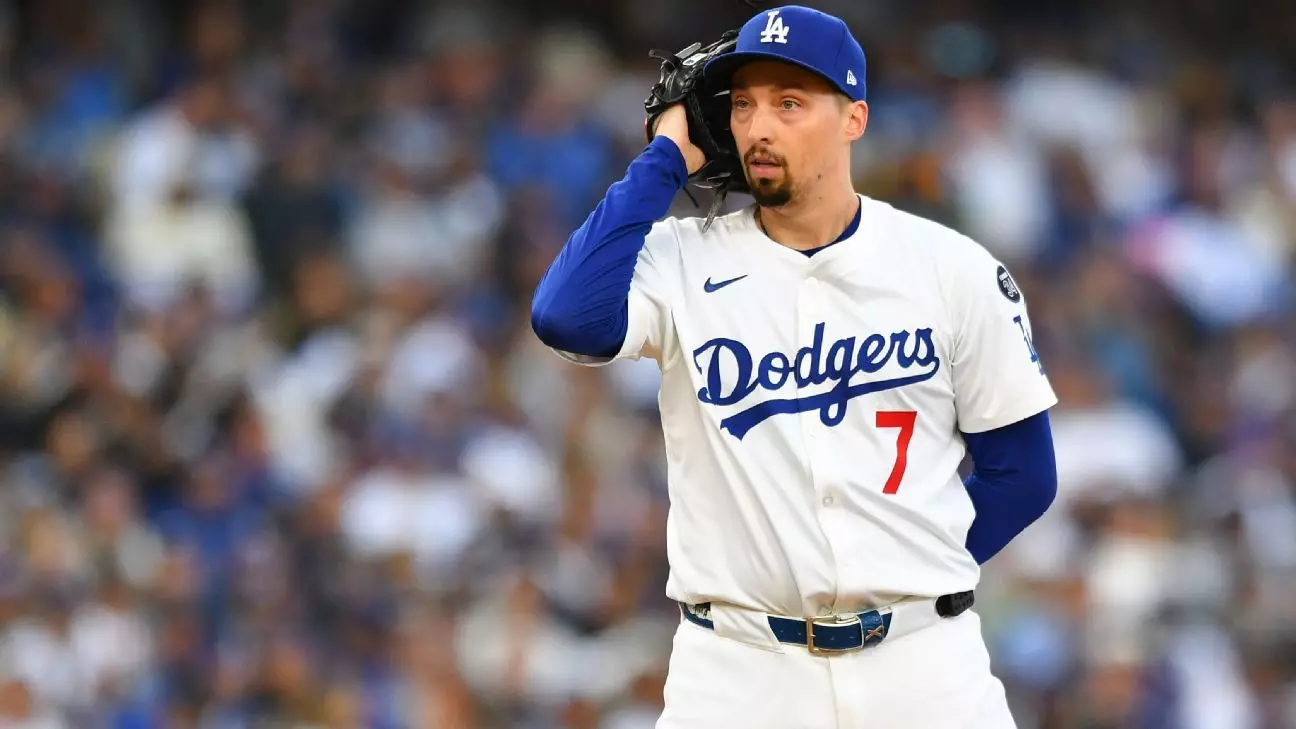In the world of professional sports, injuries are an unwelcome yet inevitable chapter. The Los Angeles Dodgers are currently facing a significant challenge in their pitching lineup, particularly with Blake Snell, who has been sidelined due to left shoulder inflammation. This recent development is particularly disheartening given the expectations surrounding Snell this season, especially after he inked a lucrative five-year, $182 million contract with the team. Manager Dave Roberts has openly acknowledged the situation, noting that Snell experienced discomfort during a routine throwing session, prompting the team to adopt a cautious approach moving forward.
The strategic decision to “slow play” Snell’s throwing regimen speaks volumes about the Dodgers’ understanding of the long-term implications of injuries. The organization’s philosophy emphasizes patience over immediate results—a sentiment Roberts clearly conveyed when discussing Snell’s recovery. The message to Snell seems straightforward: prioritize health over short-term gains, a strategy that may shield the team from prolonged setbacks down the road.
The Bigger Picture: Supporting Casts and Additional Injuries
However, Snell’s struggles are not an isolated incident; he is joined on the injured list by other key players, such as Clayton Kershaw and Will Smith. Kershaw, who has long been a cornerstone of the Dodgers’ pitching staff, is currently undergoing his rehabilitation process with optimism surrounding his minor league outings. The ability to gradually ramp up his workload without complications could bode well for his re-entry into the rotation.
In contrast, catcher Will Smith’s recent wrist injury, incurred during a game, adds another layer of uncertainty. While Roberts reassured fans by stating that the team was not overly concerned about Smith’s condition, the absence of a reliable catcher can significantly impact the pitching staff’s performance. The catcher’s role is not just defensive; it’s about creating a synergy with pitchers, particularly during a tumultuous time when several arms are struggling or recovering.
A Community of Recovery: Team Dynamics and Future Outlook
What this series of injuries demonstrates is not just the physical challenges facing the Dodgers, but also the underlying mental and emotional fortitude of the team. In an environment where pressure can lead to hasty decisions, the Dodgers are being deliberate, signaling their commitment to player health and long-term success.
Moreover, the broader baseball community has its eyes on key players like Shohei Ohtani, who, after returning from paternity leave, is easing back into throwing after elbow surgery. The unpredictability of recovery timelines poses additional questions for teams, but it also highlights the human aspect of the game. Fans are not just rooting for players; they are invested in their personal journeys, including their struggles and successes off the diamond.
In essence, the Dodgers’ current situation serves as a reminder of the resilience required in professional sports. It sheds light on how critical it is for teams to manage injuries wisely while maintaining a competitive edge. The road ahead may be fraught with uncertainties, but the Dodgers have the tools, both in talent and strategy, to navigate these turbulent waters successfully.

